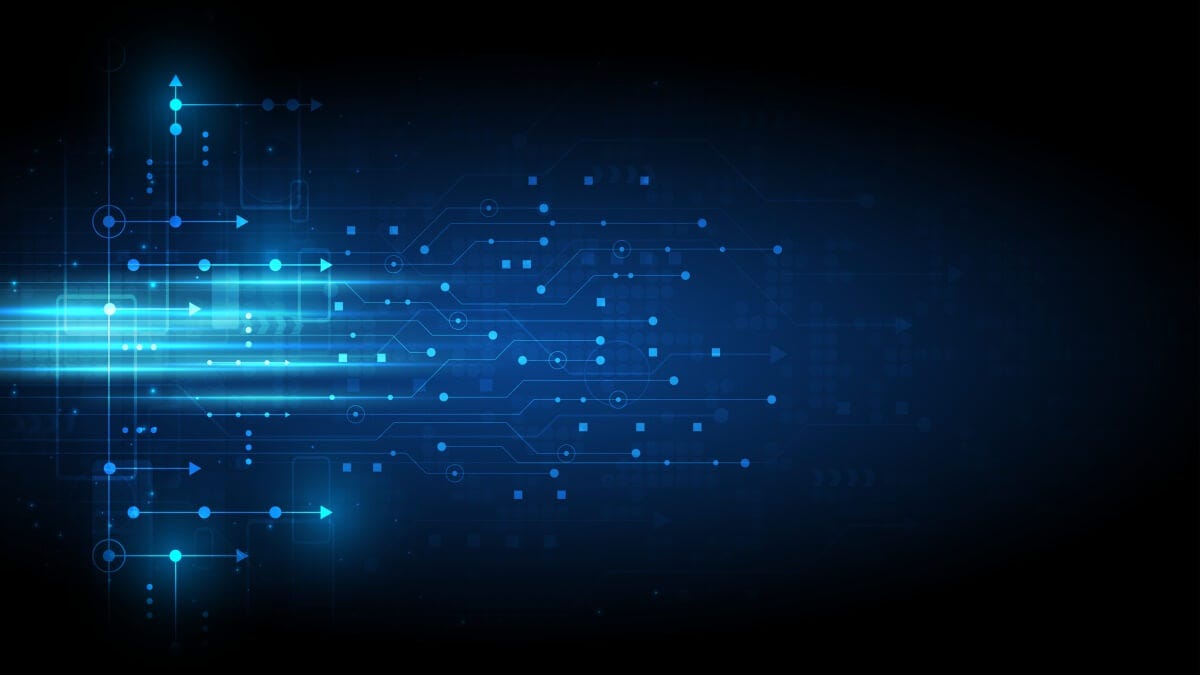Demystifying the future of Edge computing
Monday, May 2, 2022
Demystifying the future of Edge computing
Despite only gaining traction recently, Edge computing is set to take off in the coming years.
Edge computing can be considered a distributed computing method.
This means that computing isn’t directed towards cloud servers (which can sometimes be thousands of miles away) and instead stays at the edge of the network.
In other words, Edge computing keeps computational data and storage close to users in terms of network distance or geographical distance.
Often, data processing can even take place on a device itself.
By next year, a corporation called IDC predicts that more than 50% of newly deployed infrastructure will be in Edge locations rather than corporate data centers. That’s up from less than 10% in 2019.
According to the IDC, there has been a shift in mindset from “…anything and everything should go to the cloud, to ‘Let’s use the cloud for what it’s good for, and use other things [like Edge computing] when they make more sense.’”
But when does the Edge make more sense?
Well, keeping data and computation closer to (or at) the source where data is initially generated comes with benefits that organizations are finding difficult to ignore.
For example, Edge computing offers:
Fast response times.
Low bandwidth usage.
Improved performance.
Enhanced privacy.
Better efficiency for lower costs and less energy consumption.
Reliability for critical use cases.
The growth in Edge computing we’re experiencing is also occurring simply because today’s society is driven by the need for connected, smart services across many industries.
For example, Edge technology has already made its way into several products that aid our everyday lives, such as security cameras, smart homes, intelligent production robots, smart devices, and autonomous vehicles, to list just a few examples.
The availability of Edge technology will only increase in the coming years due to 7 main factors. These include:
A global rise in data use.
An extensive list of use cases that benefit from Edge computing.
Computer vision projects implementing Edge computing architectures to solve latency, bandwidth, and network accessibility issues.
An interest in innovative technologies like VR and AR.
The growth of 5G networks.
The possibility of a long-term remote workforce.
Affordable and powerful Edge AI chips appearing in countless consumer devices.
To us at Xailient, it’s clear that Edge computing is becoming the logical choice in many situations, but this doesn’t mean that the cloud is going anywhere anytime soon. Huge centralized data centers will still have their place, but when it comes to serving customers locally, Edge computing will have the stronghold.
Buckle up! The Edge is in the driver’s seat
The combination of both Edge computing and AI has created a new frontier known as Edge AI.
The following article explains how Edge computing has made it possible for AI to migrate to the Edge and take advantage of all that Edge computing offers.
Although AI is traditionally cloud-based, offloading data to external computing systems (the cloud) for further processing worsens latency, increases communication costs, and drives privacy concerns.
Edge AI offers solutions to these problems, thus driving the next generation of AI applications.
Edge AI – Driving Next-Gen AI Applications
Lights, camera, action
The article below predicts that Edge computing is set to take center stage this year because more and more applications need to be deployed at the Edge. This encourages IT managers to keep up and accelerate their digital transformation strategies.
In their predictions for Edge technology in 2022, the article lists:
Customers seeking alternatives to cloud computing.
New data-thinning techniques assisting Edge technology.
Virtual reality going corporate.
5G’s impact on Edge computing.
The continued proliferation of IoT devices.
Augmented reality hitting retail stores.
2022 Predictions: Edge Computing Takes Center Stage
5 trends to watch
The following article argues that Edge devices are growing at an exceptional rate, meaning that business professionals need to stay current with Edge trends as we forge our way further into 2022.
According to this article, the Edge computing trends to watch this year include:
The rise of IoT devices further fuels Edge technologies.
Using Edge computing’s reduced latency to provide optimal customer experiences.
Resolving cybersecurity concerns.
The adoption of Edge computing in oil and energy-related industries.
If any of that floats your boat, I recommend reading this one.
5 Edge Computing Trends in 2022
Some extra resources
That’s not fair!
This article makes for a fascinating read and tackles some big issues. If you want to find out why it’s so hard to make sure AI is fair and unbiased, give this one a read.
Why it’s so damn hard to make AI fair and unbiased
A quick comparison
The following RedHat article discusses how the Edge and the cloud are different. It states that data volume and time sensitivity are 2 main reasons this is the case.
Solar-powered IoT
IoT devices are everywhere but imagine if they didn’t need batteries to run. They would be cheaper and so much more accessible to people living all over the world.
This next article breaks down solar energy harvesting and explains why the IoT is so well-suited to this new way of powering devices.
Solar Energy Harvesting For IoT Explained
Xailient’s newest article
Check out our blog post Detectum – Faster than any other Cutting-Edge Object Detector Model.
This post discusses how Xailient uses its patented Detectum model to make embedded-Edge computer vision accurate, real-time, and cost-effective.
Thanks for reading,
See you next week!

